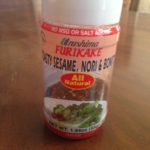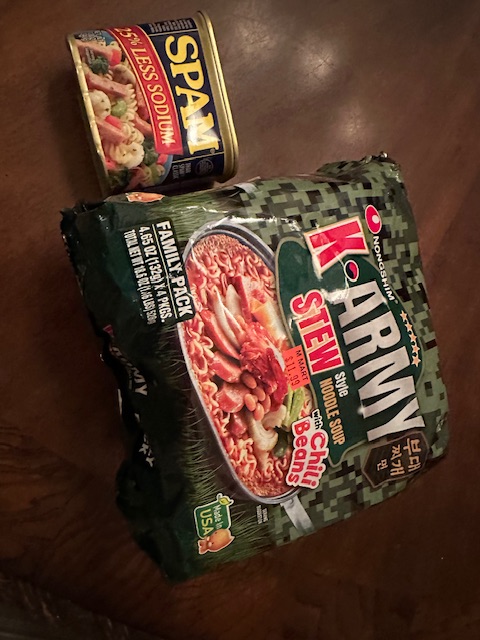Nick Kindelsperger writes, “One sip of real ramen is enough. That’s all I needed to permanently erase all those memories of those pathetic packaged noodles, which I greedily warmed up in the microwave during college. One sip. Done. It was also enough to make me question whether there was a better soup on the planet. Fragrant, rich, and soothing, it has no parallel in the Midwest cuisine I grew up on, and while other marvelous brothy soups my attract my attention from time to time (phở and pozole, mostly), ramen is the one I simply can’t live without.”
Ramen broth is one of the most complex soups in the world, as it uses at least two to three broths. The first is usually made by boiling pork and chicken, the second is from dashi (which we’ll discuss below.)
To clarify, here’s a generic ramen broth formula:
Dashi is a simple stock that’s usually made with two ingredients, kombu (kelp) and katsuobushi (dried bonito or skipjack tuna). It’s a necessary component because it makes ramen distinct from Chinese or Vietnamese noodle soup. Dashi is also crucial because kombu contains a generous amount of glutamic acid, a flavor enhancer.
PORK OR CHICKEN BROTH
Take 1 pound pork fat back or trimmings, or 1 pound chicken fat or skin, cut into 1-2 inch squares. Cover with 1 inch of water in a heavy stock pot. Bring to a boil then turn down to medium. Simmer about three hours uncovered, adding more water as necessary to keep the pan from drying out. Strain through a fine mesh strainer, discarding the solids if chicken is used but the pork can be kept separately for serving in the bowl as a meat ingredient, and refridgerate overnight. The next day, skim the solidified fat and discard the liquid. Store in an airtight container in the refriderator for up to three months.
DASHI
- 5 c. cold water
- 4″ square of kombu (dried kelp)
- 1/2 c. flaked katsuobushi (dried bonito).
Clean the kombu with a wet paper towel and slice into 1/2 inch fringe. Drop the kombu in the sauce pan, add the water, and let it just come to a boil over moderate heat. Lift out the kombu. Makes 4 cups which can be refriderated for later use, if not using immediately.
ASSEMBLING THE COMPLETE BOWL OF SHIO RAMEN NOODLES
1. Bring a pot of unsalted water to a boil for the noodles.
2. In the bottom of a ramen serving bowl, combine 2 t. warm chicken and 2 t. warm pork fat.
3. Bring the dashi to a simmer in a separate pot.
4. Drop about 4 1/2 oz. noodles into the boiling water and cook until just al dente. Drain and lift them in the bowl.
5. Cover the noodles with dashi.
6. Add your toppings.
The lineup of traditional ramen toppings commonly include green onions, beansprouts, wood ear mushrooms, bamboo shoots, seaweed, naruto (that pink & white eraser-like object), garlic, oil and a protein, which is usually chashu. Aji tamago (marinated soft-boiled egg) is a popular, the recipe for which is below, as it is one of our favorites.
HALF COOKED EGG
Adapted from a recipe from Ivan Ramen: Love, Obsession, and Recipes, from Ivan Orkin
- 50 milliliters (31⁄2 tablespoons) sake
- 50 milliliters (3 1⁄2 tablespoons) mirin
- 200 milliliters (13⁄4 cup + 1 tablespoon) soy sauce
- 30 grams (2 tablespoons) sugar
- 40 grams (3 tablespoons) garlic, chopped coarsely
- 75 grams (21⁄2 ounces) fresh ginger, chopped coarsely
- 6 room-temperature fresh large eggs 1 liter (1 quart) water
1. Simmer the sake and mirin in a saucepan over medium-high heat for 2 minutes to cook off a bit of the alcohol. Reduce the heat to low, then add the soy sauce, sugar, garlic, and ginger and simmer and stir for 10 minutes. Let come to room temperature; you can store the mixture in the refrigerator for up to a week.
2. Bring a large pot of water to a boil. You want a big pot so that when the eggs go in, the temperature won’t drop too drastically, and the water will quickly come back to a boil.
3. Poke a small hole in the bottom (larger end) of each egg with a pushpin.
4. Gently slide the eggs into the boiling water. Start your timer. Stir for the first 2 minutes. Prepare a large bowl of ice water to shock the eggs.
5. The total cooking time for a large egg in Tokyo is 6 minutes and 10 seconds. You might decide to adjust that time depending on the size of your eggs, how many you’re cooking, or what the chickens were thinking about when they laid them.
6. Remove the eggs after 6 minutes and 10 seconds, and immediately place them in the ice bath. Stir until there are no pockets of hot water.
7. In a large bowl, combine the shoyu tare with the liter of water. When the eggs are cooled completely — after about 15 minutes — peel and soak them in the seasoning liquid for 2 hours in the refrigerator. The eggs will hold in the soak for 3 days.
8. When it comes time to slice the eggs and add them to the ramen, a taut nylon fishing line gets the job done without losing any of the precious yolk.
EXTRA ARMY TOPPINGS TO MAKE IT A BIGGER MEAL
Budae jjigae, or “army base stew”, is a popular South Korean dish that combines Western meats with traditional Korean ingredients. It’s a fusion dish that uses American processed meats like Spam, ham, bacon, and hot dogs in a Korean stew with kimchi.
Common ingredients in budae jjigae include:
Ham, Sausage, Spam, Baked Beans, Kimchi, Gochujang, Tofu, Mushrooms, Cabbage, Onions, Rice Cakes.





Leave A Comment
You must be logged in to post a comment.